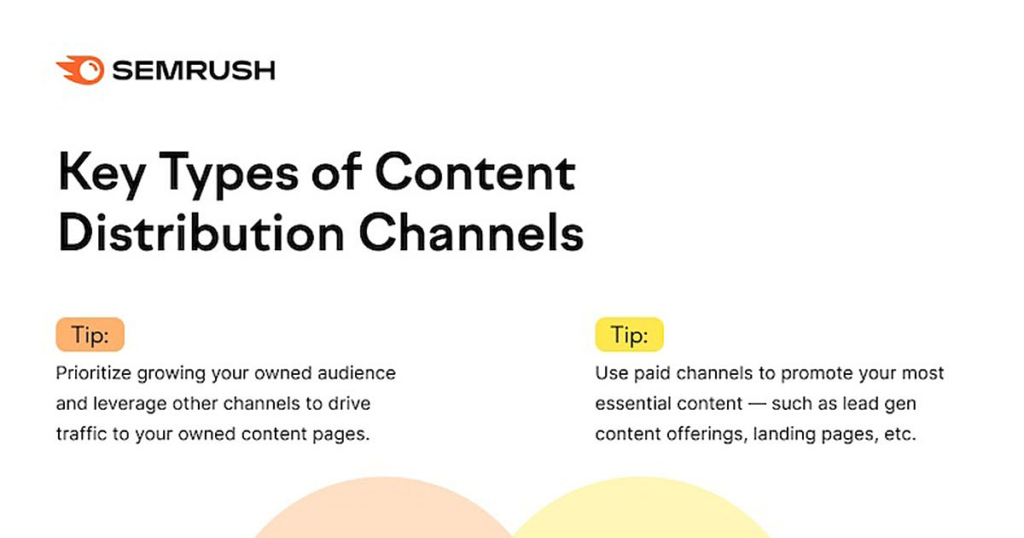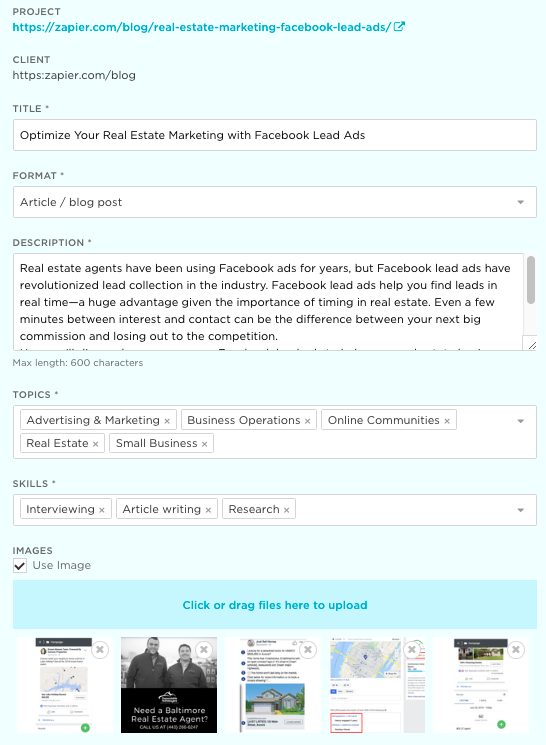Content Distribution Pros and Cons: Top 6 Distribution Platforms Reviewed

Table of Contents
- What Is Content Distribution?
- What Are Content Distribution Platforms?
- Top 6 Content Distribution Channels: Pros and Cons
- Key Takeaways
- Conclusion
- FAQs
In this era of digitization, an exponential rise in content creation has been observed. Therefore, merely putting out content isn’t enough: distributing the content efficiently will make a huge difference. In order to distribute content efficiently, you must be aware of the various content distribution pros and cons. This blog is a comprehensive analysis of some of the top content distribution platforms, their benefits, drawbacks, and cost.

What Is Content Distribution?
The process of promoting content through a number of distribution channels is known as content distribution. Content distribution is an important phase in content marketing, as it increases the reach, views, and sales of the content that has been created.
It’s pointless to create high-quality content if your intended audience can’t view it. Building a solid basis for the distribution for each type of material will help you get more return on investment (ROI) with your content marketing.
Distribution is a procedure that must be factored into the content generation process. You increase your chances of getting as much out of your content marketing strategy as you can by creating material that suits your audience.
Therefore, your content distribution plan must have a defined goal. Every business has its own set of requirements, which should be taken into account when devising a strategy for advertising content.
What Are Content Distribution Platforms?
Any channel through which content can be posted and shared is referred to as a content distribution channel. As and when an organization opts for content distribution channels, they have the option of owning the channels, paying for accessing the channel, or freely sharing content on them.
Paid content distribution methods are more dependable and controllable, as you can quantify the outcome better.

They are an essential component of any distribution plan. The efficiency of content marketing is enhanced when there is a provision of control over target audiences and how they are reached. With organic distribution channels, it may take longer for your content to reach the target audience. The advantage of this content distribution method is that it is a form of low-cost marketing, because the material can be freely disseminated.
Top 6 Content Distribution Channels: Pros and Cons
In this section, we take a look at some of the best content distribution channels, and their pros and cons.
1. WiseStamp
WiseStamp is one of the best solutions for businesses that want to compose more emails. Using WiseStamp as a content distribution method would be a great way to leave your brand’s impression on customers’ minds.
Pros
- One advantage of this content distribution channel is that you can also post their social media account information on the portal.
- There is also a provision to include a link to Twitter handles as a call-to-action (CTA) button.

Cons
- There are limited options for templates.
- The app doesn’t function that well on iOS.
Cost
WiseStamp charges each user $2 per month, with a 14-day free trial.
2. Sumo
Another excellent content distribution channel is Sumo. It is a WordPress plugin that includes numerous tools for distributing both earned and owned material. It has some useful tools for owned media, such as a sign-up bar for building email lists.
For earned media, there is a tool called “Share”, which allows you to track how consumers react to your content. You can spread your material across more than a dozen social media networks. Sumo also includes heat maps, which can be used to track visitor clicks and to place CTAs at key spots in your content.
Pros
- An intuitive interface that is fairly comprehensible
- Free version has limited features
Cons
- The premium version is slightly expensive
- The free version has a lot of branding
Cost
The pro version costs $49 per month. If you buy the yearly plan, you can save $120, bringing the price down to $39 per month. You get a 30-day money-back guarantee with both plans.
3. PR Newswire
PR Newswire is a news release distribution channel. It has the capacity to disseminate your content to about 200,000 media sources. One of the best content distribution channels in the industry, it also offers resources for journalists and multimedia distribution facilities.
Pros
- This content distribution increases the visibility of your communication.
- It reduces the time and effort it takes to spread the word to the right sources.
Cons
- The tool is considered expensive by many.
- Customer service can be made better.
Cost
The annual membership fee is $195. While it offers a free trial, it does not offer premium consulting or integration services. You can visit its website for detailed pricing.
4. Contently
Contently works with the world’s biggest businesses to generate and distribute engaging content on a large scale.

What distinguishes the tool is its mixed approach: it assists users in generating and distributing strategically distinctive content. It delivers outcomes by combining an end-to-end platform, a proven strategic approach, and a curated talent network into one holistic solution. It is also widely used by content creators to create and share their portfolios.
Pros
- One of the advantages of this content distribution channel is that its user interface is really clear, and the collaborative capabilities are simple to use.
- It has a wide network of writers and other content creators you can tap into.
Cons
- There is no simple way to transfer documents from one publication to the next.
- When you copy and paste text into a field to create a blog, it nearly always results in erroneous spacing or text that is merged wrongly when previewed.
Cost
Contently’s standard package is priced at $499 per month.
5. Listly
This is a simple content distribution platform, which is especially useful if there is a need to create and distribute lists in a specific area. Listicles are a common type of content, because they are quickly scannable and shareable. This tool is great for getting your content the visibility it needs, in addition to establishing lists linked to a specific niche.
Pros
- You may link Listly lists to other websites, such as a blog.
- The list can be moderated by the owner, and readers can engage with it.
Cons
- There is presently no Android app available.
- The free version doesn’t have enough features,
Cost
Although a free trial is available, it is short. The business version is available for $90 per month.
6. Mailchimp
Mailchimp is a content distribution channel built for companies who use email to reach out to their target customers. It is a one-stop shop for managing mailing lists, creating bespoke email templates, and nurturing and automating your whole marketing campaign. Enterprises that want to use email marketing require a platform like Mailchimp to help them run their campaigns like a well-oiled machine.
Pros
- It provides sales and campaign performance measurement.
- It offers a reasonable amount of templates.
Cons
- Paid subscription is on the expensive side.
- Poor support for video media files in newsletters
Cost
Mailchimp offers a free trial and several paid versions. The standard version is priced at about $15 per month, whereas the premium version costs $307 monthly.
Key Takeaways
- Content distribution channels are responsible for the efficient distribution of the content. They lead to better reach and visibility.
- They can be either paid or unpaid.
- Simply creating content is not enough. You need a content distribution system to ensure your content reaches the right audience.
- Some of the top content distribution channels are Mailchimp, Contently, Listly, WiseStamp, and Sumo.
Conclusion
It is preferable to choose a content distribution channel that suits the specific requirements of your business. The majority of these platforms offer built-in analytics to track performance data, allowing you to fine-tune your distribution efforts.
Staying up to speed on the finest content distribution platforms is sure to pay off. Ensure you study the various content distribution pros and cons; and keep in mind, the most important component of content distribution is identifying your niche target. This ensures your material reaches the right people.
FAQs
Any method utilized by brands to disperse content to targeted audiences is referred to as content distribution. The number of content distribution platforms is growing by the day, but they may be divided into three categories: paid media, owned media, and earned media.
A content distribution strategy assists an organization in disseminating its material, whether it’s promoting a new blog post or distributing a new ebook. Publishing content only gets you so far; a content distribution strategy ensures that it is seen by as many people as possible.
WiseStamp is the most effective email signature tool available. It has a generous free version that anyone can use. But for a few dollars a month, you can get access to more templates, and assign various signatures to various email accounts.
It is an amazing content distribution platform. It is a WordPress plugin that is simple to set up and use. Sumo is jam-packed with capabilities that will elevate your content’s reach and visibility.
Mailchimp is a simple-to-use application with a user interface that is rather intuitive. The more you use it, the more comfortable you’ll become with it.
Latest Blogs
Explore how Google’s 2025 AI search updates triggered ranking chaos. Learn actionable strategies to adapt your SEO for AI Overviews, zero-click searches, and SERP volatility. Stay ahead now.
Learn how to rank on AI search engines like ChatGPT, Perplexity, and Gemini by optimizing your content for authority, structure, and relevance. Stay ahead in AI-driven search with this strategic guide.
Explore the best healthcare SEO services for your medical practice. Improve online visibility and effectively reach more patients in need of your services.


